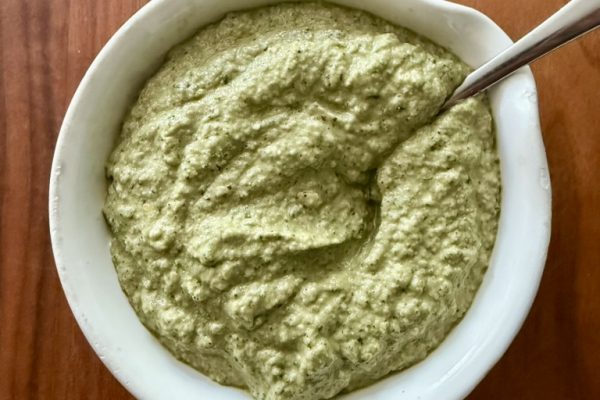Anyone who cultivates shiso has probably already noticed that this plant grows very generously. And at some point, the question arises: what to do with all the leaves? A wonderful answer to this is furikake – a Japanese seasoning that is traditionally used to flavour rice, but nowadays also fish, vegetables, tofu and other food. Tip: simply sprinkle it on a slice of bread and butter.
Shiso, also known as perilla, is a herbaceous plant of Asian origin that is mainly used in Japanese and Korean cuisine. It does not need a lot of sun or heat and thrives here in Germany. The colour of its leaves ranges from rich green to dark purple. The taste is difficult to describe and is somewhat reminiscent of a combination of basil and mint.
The name furikake (振り掛け) is composed of ‘furu’ (to sprinkle) and ‘kakeru’ (to cover). It was actually developed at the beginning of the 20th century by a pharmacist named Suekichi Yoshimaru to counteract the widespread calcium and protein deficiency among the population.
We wash and dry the shiso leaves from the last harvest of the year and then spread them out on baking paper on a baking tray. They can overlap slightly, but must not be piled in several layers.
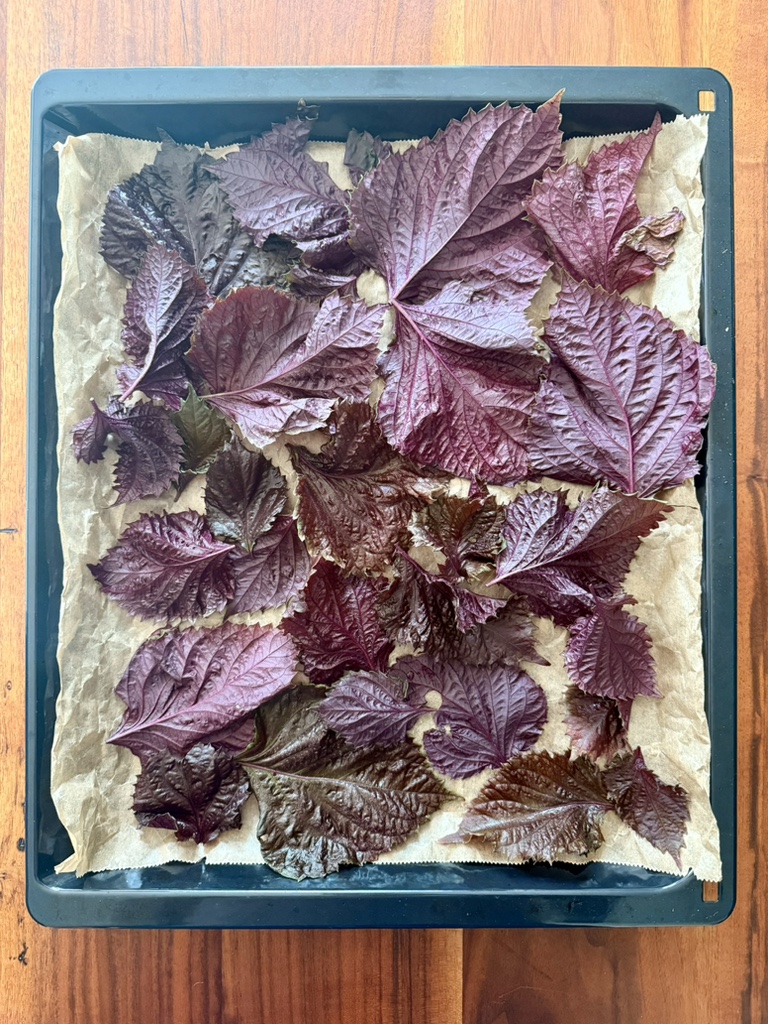
Place the baking tray in the lower third of the oven. Leave the oven door slightly open to allow moisture to escape. You can simply wedge a wooden spoon in the door to do this. Then dry the leaves at 80 °C with the fan on for 45 minutes.
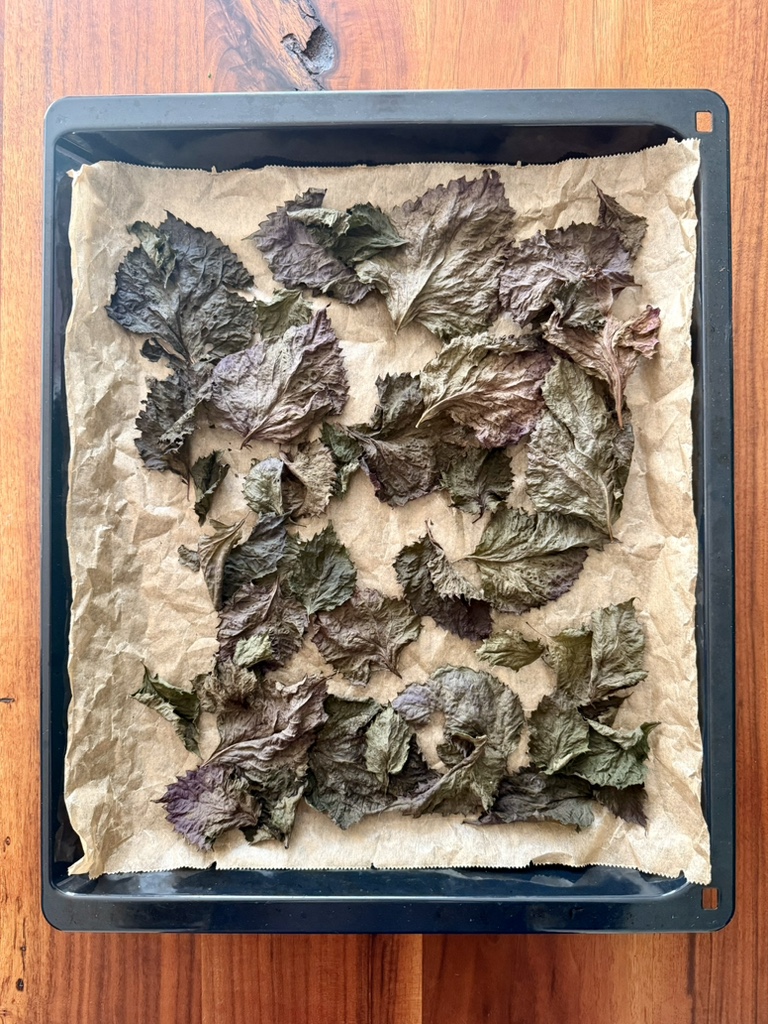
This makes it easy to rub them between your hands into flakes measuring 1–2 mm in size.
Classic ingredients of furikake are katsuobushi (flakes of dried fish), white sesame, nori (dried seaweed), sugar and salt. Depending on the mixture, vegetables, garlic, sanshō pepper and shiso are also used, as well as salmon, eggs and, of course, all kinds of industrially processed ingredients.
We mix katsuobushi, white sesame seeds (which we briefly dry-roast in a pan), ground dried seaweed (aonori), mild chilli flakes (gochugaru from Korea) and a little miso powder with our dried shiso leaves. This adds a lot of umami!
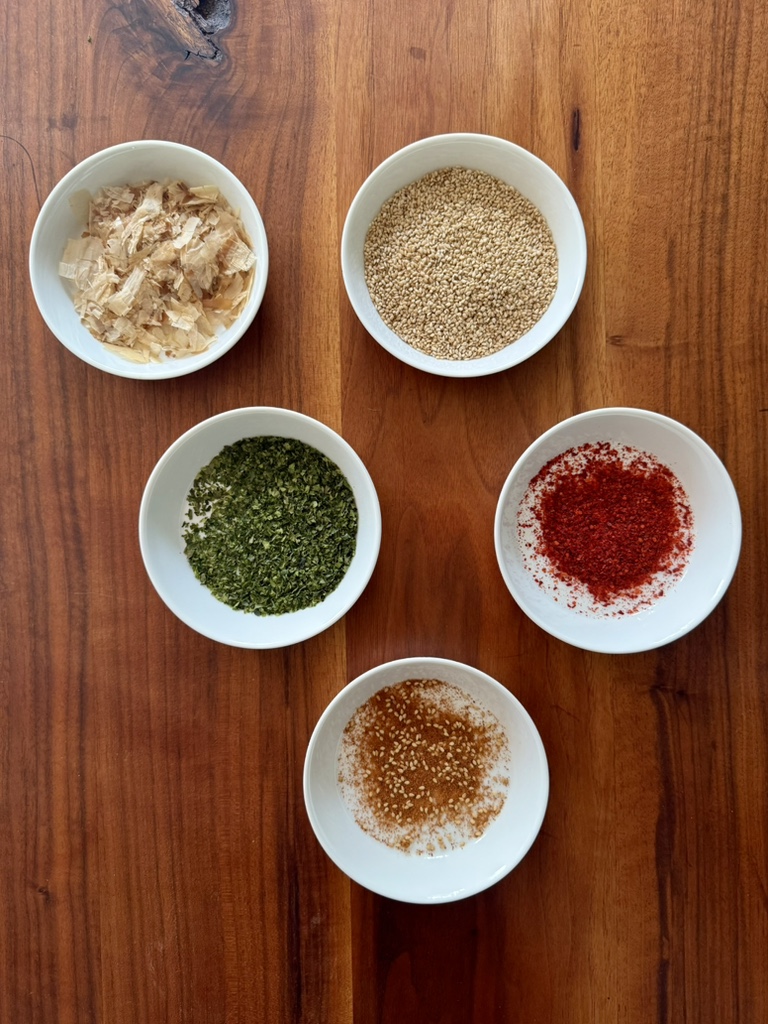
How much of each ingredient you use is purely a matter of taste. We provide a few guidelines below, but everyone should feel free to experiment according to their own preferences. The dry mixture can be stored almost indefinitely if protected from light.
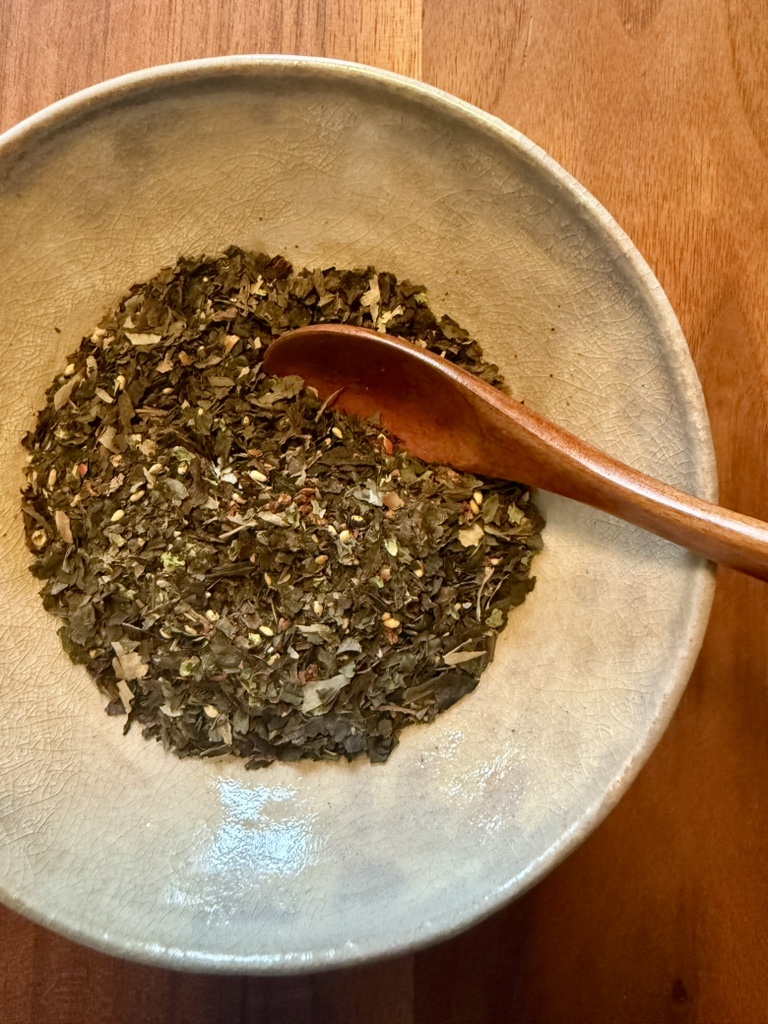
Suggestions for ingredients:
30 g shiso leaves
2 tbsp katsuobushi
1 tbsp light sesame seeds (dry roasted)
1 tbsp aonori
1 ½ tsp gochugaru
1 tsp miso powder

